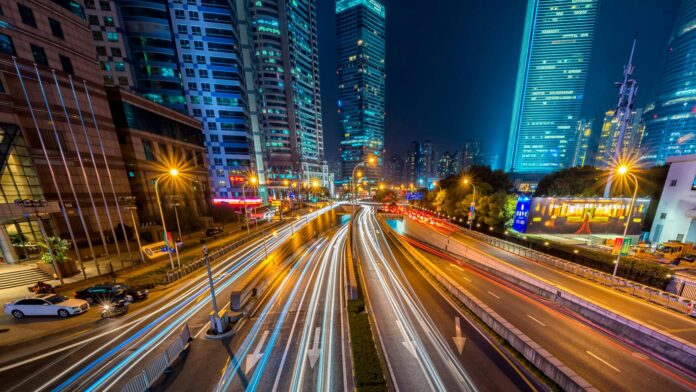Mobility, Energy Efficiency, and Low-Carbon Planning
South Asia is experiencing rapid urbanization, with cities expanding at unprecedented rates. This urban growth presents significant opportunities for economic development, innovation, and improved quality of life, but it also introduces critical challenges in mobility, energy management, and environmental sustainability. For governments, investors, and corporate leaders, the concept of smart cities, integrating technology, data-driven planning, and sustainable infrastructure, has emerged as a strategic framework for addressing these challenges while enhancing urban competitiveness.
Urban mobility is among the most pressing concerns for rapidly growing cities. Congestion, unreliable public transport, and inefficient freight systems reduce productivity, increase operational costs, and contribute to air pollution. Smart urban mobility solutions, including integrated transport networks, real-time traffic management, electric vehicle infrastructure, and shared mobility services, offer a path toward efficient and low-carbon movement of people and goods. For policymakers, prioritizing these solutions reduces congestion-related economic losses, lowers greenhouse gas emissions, and enhances accessibility, while businesses benefit from reliable logistics and workforce mobility.
Energy efficiency is a cornerstone of sustainable urbanization. Cities consume the majority of energy produced, primarily for buildings, transportation, and industrial activities. Smart grids, energy-efficient buildings, and demand-side management technologies enable cities to optimize energy use, integrate renewable sources, and reduce costs. Incorporating distributed energy generation, such as rooftop solar or microgrids, not only mitigates grid strain but also provides resilience against power outages and price volatility. For industrial and commercial actors, energy-efficient urban environments lower operational costs, improve reliability, and align corporate operations with international ESG expectations.
Low-carbon urban planning extends beyond technology to encompass the broader design and development of cities. Land-use planning, mixed-use development, green infrastructure, and public transport-oriented designs reduce reliance on private vehicles and minimize emissions. Water-sensitive urban design, waste-to-energy systems, and urban greening initiatives further enhance resilience while supporting public health and quality of life. From a strategic perspective, cities that adopt low-carbon planning not only mitigate environmental risks but also attract investment, stimulate innovation, and improve competitiveness in global markets increasingly influenced by sustainability credentials.
Data and digital infrastructure are central to smart city development. Real-time monitoring of traffic, energy use, air quality, and water consumption allows for evidence-based decision-making. Predictive analytics and artificial intelligence enable proactive management of resources, from adjusting traffic flows to optimizing energy distribution. For corporate stakeholders, access to smart-city data facilitates informed investment decisions, identifies operational efficiencies, and enables collaboration on sustainability initiatives with municipal authorities.
Financial and policy mechanisms are critical enablers for sustainable urbanization. Public-private partnerships, green bonds, and concessional financing models can mobilize capital for large-scale infrastructure projects. Governments must provide regulatory frameworks that incentivize low-carbon construction, energy-efficient retrofits, and sustainable mobility solutions, while ensuring transparency, accountability, and alignment with long-term urban planning objectives. Strategic collaboration between public authorities, private developers, and technology providers ensures that investment delivers measurable environmental, economic, and social outcomes.
Regionally, South Asia’s urban centers face similar challenges and opportunities, offering scope for knowledge-sharing and collaborative solutions. Cities can benchmark best practices in mobility, energy efficiency, and low-carbon planning, creating replicable models that optimize resource allocation and reduce implementation risks. For businesses, regional engagement strengthens networks, enables standardization of solutions, and improves market entry strategies in the urban sustainability sector.
Ultimately, smart cities represent a convergence of technology, policy, finance, and urban design. They provide a framework for managing growth, improving quality of life, and reducing environmental impact while enhancing economic competitiveness. For C-suite leaders and policymakers, embracing smart-city strategies is not a peripheral sustainability initiative—it is a core strategic priority. Cities that invest in sustainable mobility, energy efficiency, and low-carbon planning today position themselves and their stakeholders for long-term resilience, operational efficiency, and global competitiveness.
In conclusion, sustainable urbanization through smart cities offers South Asia a unique opportunity to reconcile rapid growth with environmental stewardship. By prioritizing mobility, energy management, and low-carbon planning, governments and businesses can create cities that are efficient, resilient, and globally competitive, transforming urban challenges into strategic advantages for the region’s economic and social future.




